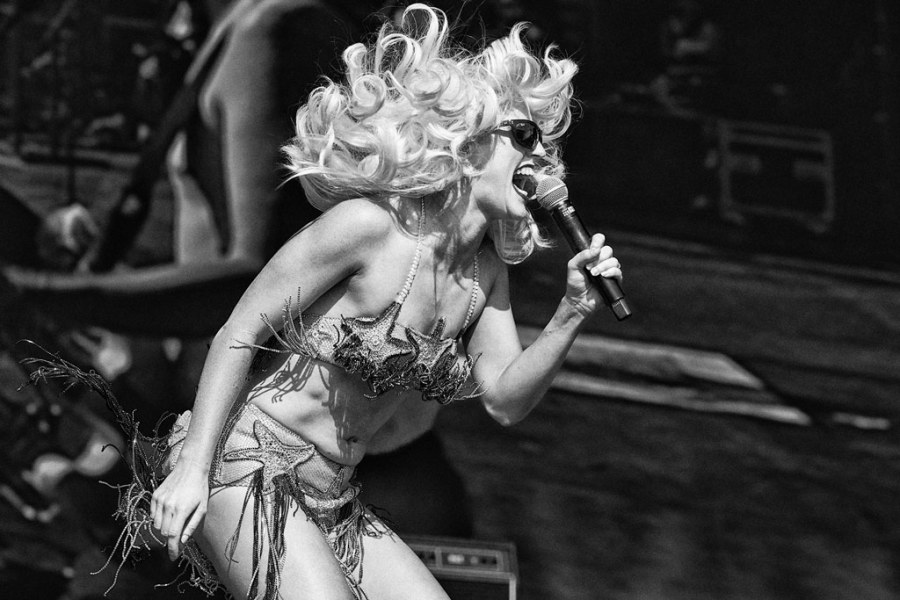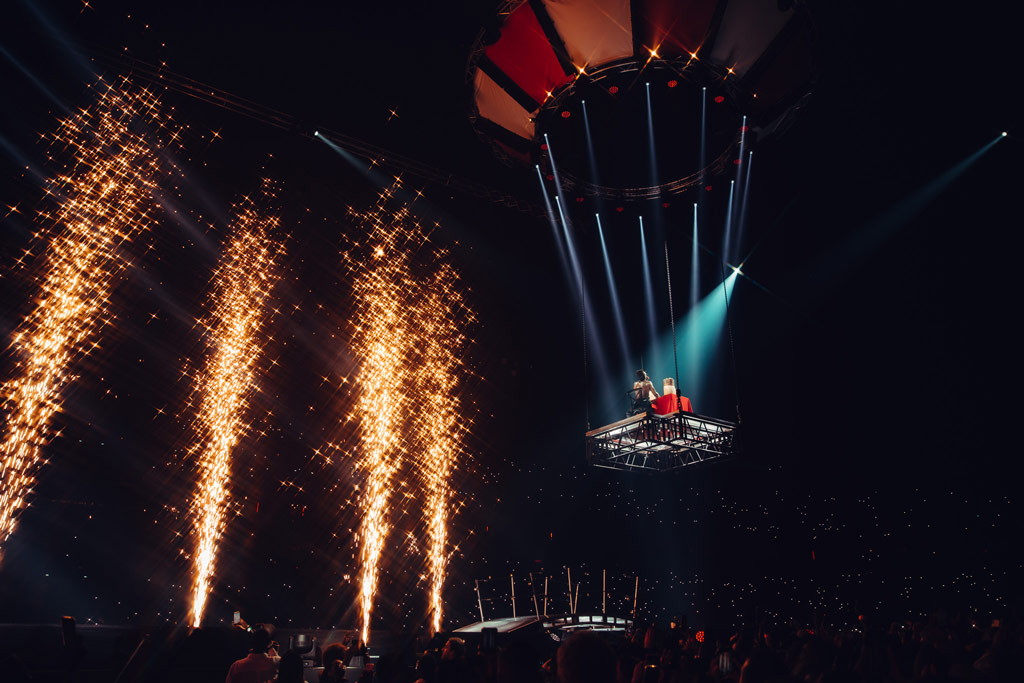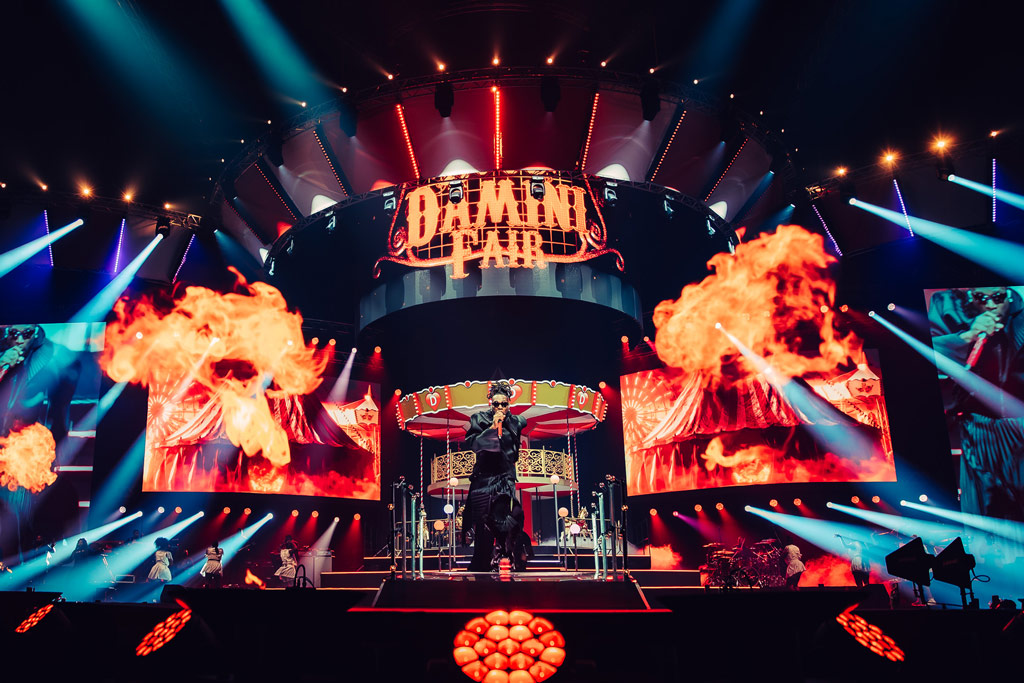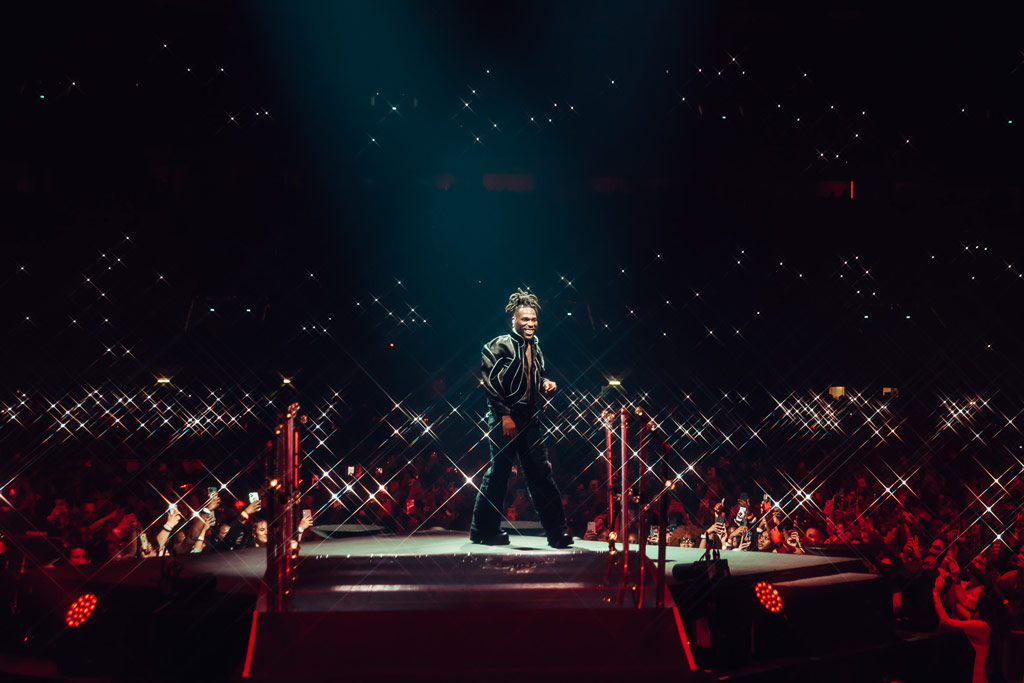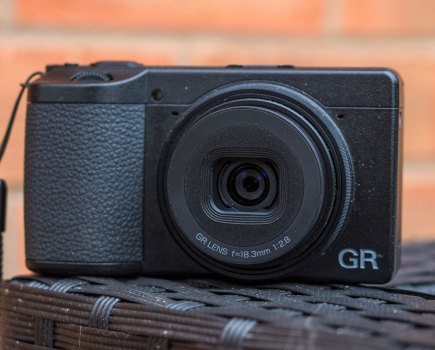The annual Abbey Road Music Photography Awards (MPAs) have been increasing in popularity since their launch in early 2022, with stunning images winning the competition’s categories over the years. In 2024 the awards attracted over 22,000 entries from 30 different countries – a 50% increase on the 2023 entry levels. There are two huge advantages to entering the awards – they are free to enter and open to photographers (over 18) of all experiences. If you’re a keen amateur who is proud of your work, it can be entered and judged alongside images by professional music photographers.
The 2025 categories
- Music Moment of the Year (sponsored by Outernet)
- Emerging Photographer of the Year (sponsored by Adidas)
- Making Music
- Underground Scenes
- Live Music
- Portraits
- Festivals
- Club Culture
In addition, there are two special awards – the Judges’ Choice, for which the judging panel chooses an image for its outstanding creativity, and the ICON award, which is given to an exceptional photographer for their impact and contribution to the art of music photography.
The 2025 judges
The 2025 Abbey Road MPAs has an all-star judging panel, which includes the photographers Rankin, Janette Beckman, Scarlet Page, Tom Pallant, Shot By Nee and Bolade Banjo. They’re joined by music legend Nile Rodgers, producer and songwriter Djo/Joe Keery, Black Pumas’ frontman Eric Burton, producer/DJ Dimitri From Paris and Sunflower Bean’s frontwoman Julia Cumming.
A little help from our friends…
To give you a helping hand with entering the Abbey Road MPAs, AP spoke to three of the judges – the music photographer Scarlet Page (who has been shooting rock icons for over 30 years), the two-time MPA winner Tom Pallant (known for his work with Yungblud and Blur) and the rising star of music photography Shot By Nee (Burna Boy’s official photographer). Keep on reading to discover the favourite images they’ve shot and to find out their invaluable tips for shooting music and entering competitions…
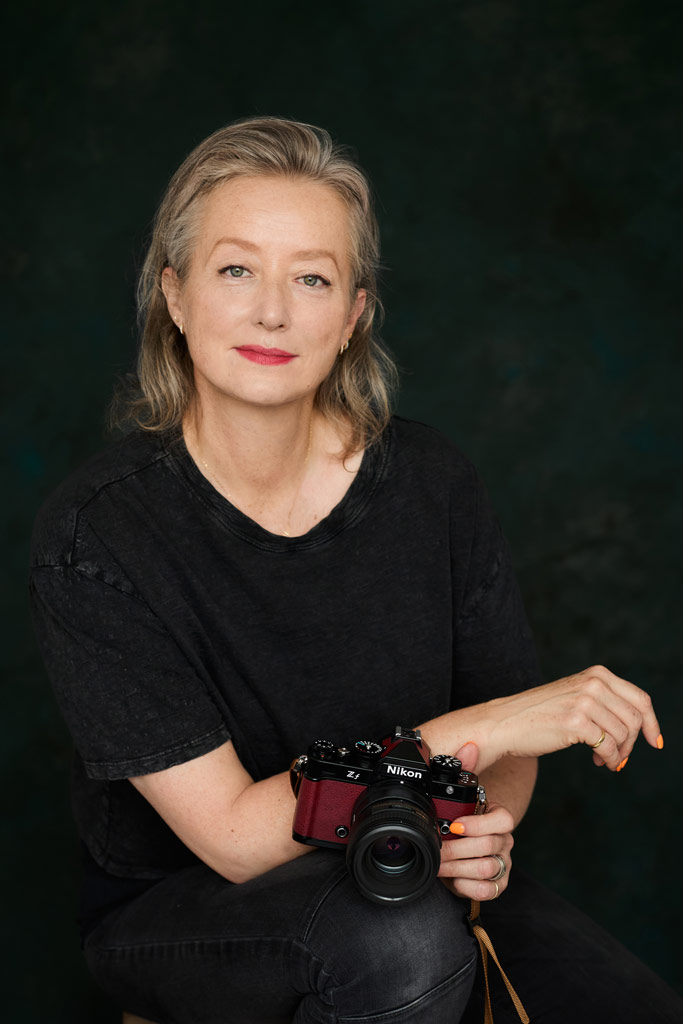
Scarlet Page
Scarlet Page is an English music photographer who shot her first commission, of Soundgarden vocalist Chris Cornell for RAW magazine, in 1993. She has since built an international reputation for her music portraits and live imagery. Her work has featured in Q, Kerrang!, Blender and Spin and includes photographs of the Rolling Stones, Oasis, The Darkness, Red Hot Chili Peppers and many other artists. Follow her on Instagram at @scarletpage and see more of her work at www.scarletpage.com
Scarlet Page’s favourite pictures
Amyl and The Sniffers, Glastonbury 2025
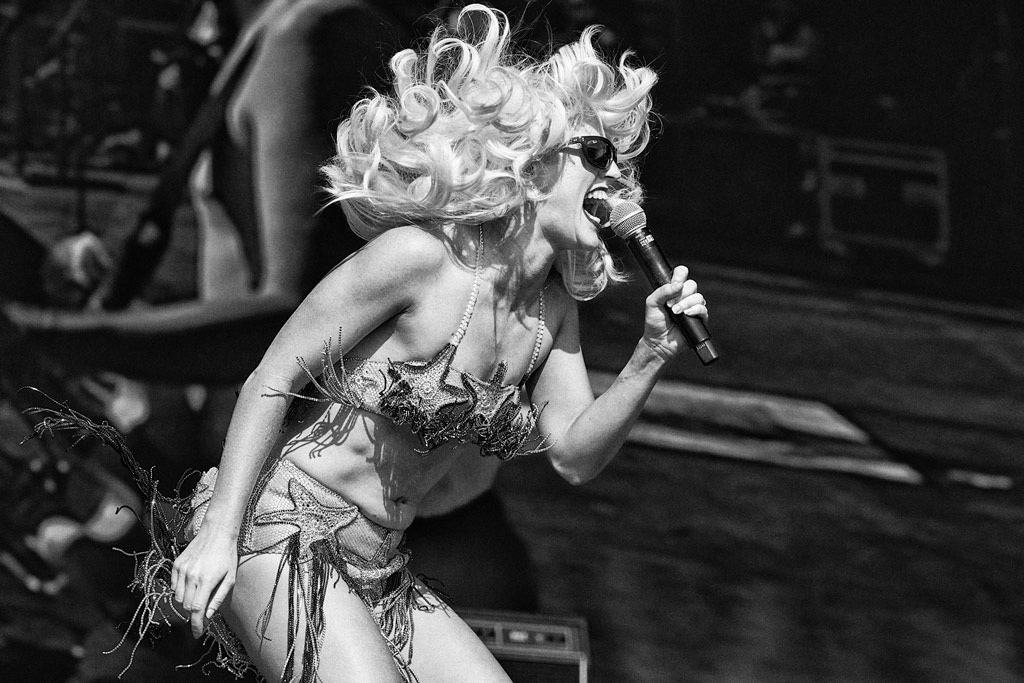
‘I’ve been following Amyl and the Sniffers avidly for a few years after I was made aware of them from some time spent in Australia. Amy’s energy really struck me and I wanted to capture some of her fire. I finally had the opportunity to shoot them this year at Glastonbury… [singer] Amy is a photographer’s dream.’
Coldplay, Glastonbury 2024
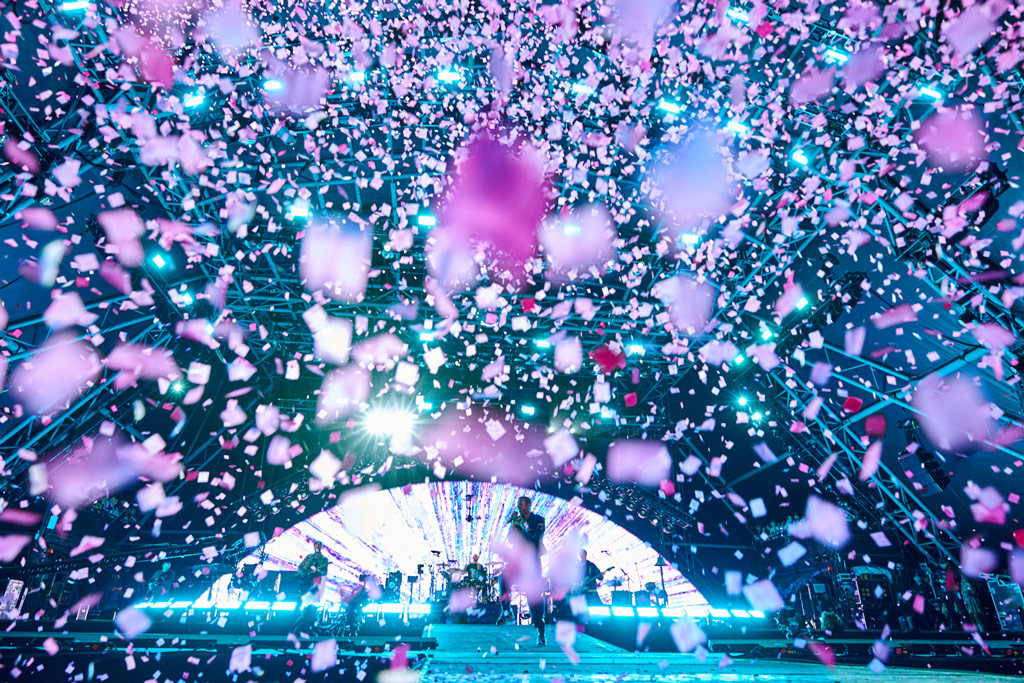
‘I was fortunate enough to be one of a handful of photographers in the pit for Coldplay’s performance. The pressure was on, but so was the excitement. This shot perfectly captures the essence of a Coldplay show – the band on stage, confetti showering over the crowd with a sense of pure celebration in the air. It’s a moment that embodies the joy and energy that Coldplay brings to their performances, and being able to document it was an unforgettable experience.’
The Verve, A Northern Soul, 1994
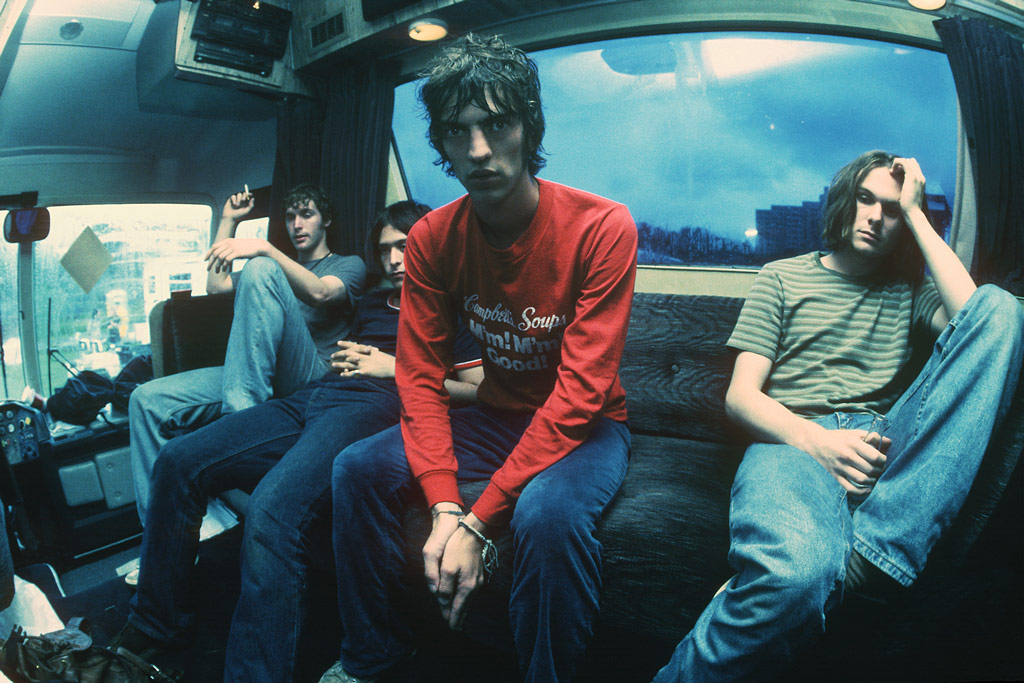
‘My picture of The Verve was the first shot I ever took that made my portfolio stand out. I had lots of air miles from assisting, so I decided to go to this festival in America. I was introduced to The Verve, because they were from England, and was taken onto their tour bus. I just said, “is it alright if I take some pictures?” They sat in the front of the bus and I didn’t have a plan. I was cross processing my film – I had some C41 that I was processing through E6 – because it was all the trend at the time and I was bounce flashing with a fisheye. I didn’t know if the pictures were coming out but they came out really well, were really vibey, though the band looked pissed off. They were having some trouble in the band – it wasn’t all hunky dory.
When I came back I made a composite card with some fresh images on and sent it out to everyone I knew managers, PRs… Their manager called up straightaway and said, “We love this shot and we’d like to use it in their album artwork”. From just doing it off my own back, and making something happen, that shot became so huge in terms of a kickstart. It was inside their A Northern Soul album, so that’s pretty special for me. I was being resourceful and taking chances out of my comfort zone… and it worked. It didn’t always, but that time it did.’
The Gallagher Brothers, 2001
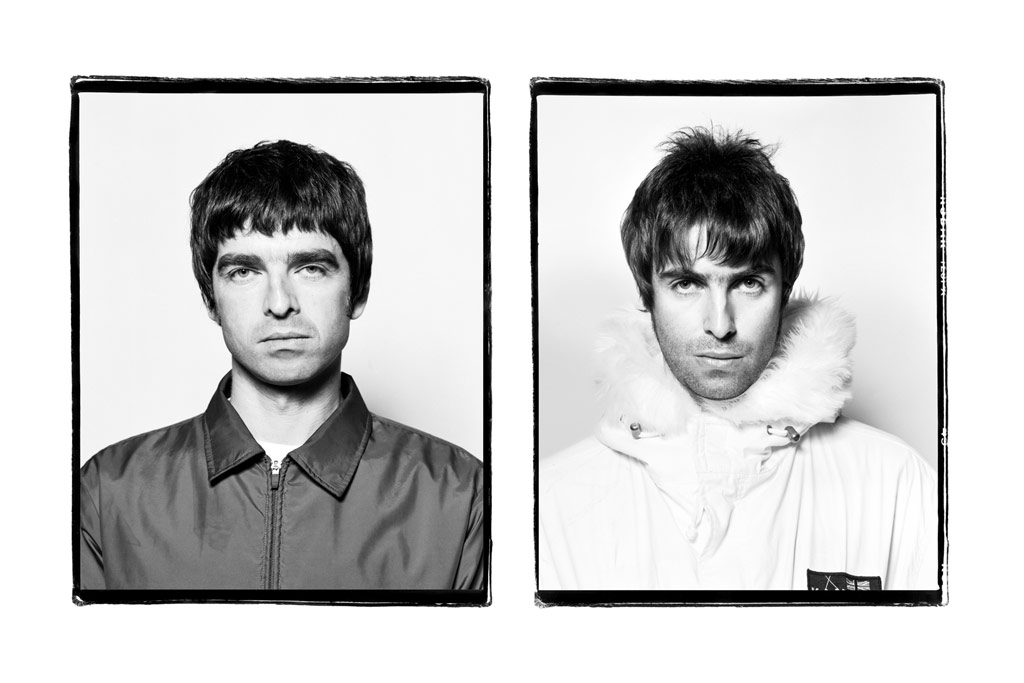
‘I shot them in the hallway of The Scala for an editorial that was to do with them touring with the Black Crowes brothers and Space Hog Brothers. It wasn’t a feature about Oasis, but I made sure I did plenty of shots for the brief. I took shots of the Gallagher brothers on their own and, as time has progressed, those images have become a lot weightier in how they’re viewed. I was pleased to shoot the two brothers in Oasis because they were huge at that time. The pictures look very classic now looking back – black and white, very contrasty and it looks like they were shot in a studio, not a hallway. You just see really clean, beautiful, almost Bailey-esque kind of portraits. There’s one composite that I made of the two together that I’m pretty fond of. Obviously, at the moment, it’s popping up everywhere. It just shows the resourcefulness of thinking outside the brief and making sure you cover yourself. At this point, 30-odd years into my career, having that archive that is all mine is great… some people don’t have that, but you want to keep your copyright.’
Scarlet Page’s top tips for music photography
1 – Form a connection for portraits
‘Portrait-wise, it’s all about forming a connection and allowing your subject to feel relaxed. Most people don’t really love being shot. In a studio they are quite vulnerable; just standing in a space and you’ve got someone looking at you through a lens… it’s quite intimidating. I want to try and connect immediately, just on a chatty level. I don’t direct that much. I try and get something that’s not just a photograph. Something that’s a little bit behind the mask or a more light-hearted moment where they drop their guard. Sometimes you just have to say something silly or get them to talk between themselves. It depends what the vibe is that you’re going for, but the viewer needs to feel a connection with the image. You want to be drawn in and interested, because otherwise you just scroll past.’
2 – Shoot variety
‘I try and get as much variety. If I have an hour with a new band then I will just try and do as many different looks as I can – colour, black and white, some lit, some natural light. Particularly if it’s a commission, then you want to try and make it look like it wasn’t all done in the same place on the same day.’
3 – Get new angles
‘The recent Glastonbury festival was pretty much standard – you get three songs and it’s a high stage. I will take a box to stand on because I like to be able to just have that option of getting a slightly more not “under the chin” angle.’
4 – Pay attention and tune in
‘With live photography, I’ll get the action shots, try to get the energy, but I also try and get the sort of moments where they pull back from the mic, are maybe laughing or just before they come back in and start singing again. It’s also anticipating what’s happening in the music. You’re not watching a gig… you’re kind of tuning in and being ready. I don’t run around the pit. You’ve got three songs, so I might move a little bit for every song. But sometimes it’s quite interesting to see how the action comes to you. I’ll always have at least two bodies with different lenses, so that if something is going to be better caught as a wide, then you’ve got that, but you can also zoom in. I’m not the kind of photographer who just [makes rapid shutter noise] takes multi shots. I tend to be a bit more considered, but I guess that’s because I’ve been doing it since the early ‘90s and in those days you couldn’t just reel off so many transparency frames. It’s just about paying attention and being locked in.’
5 – Entering competitions – ask for opinions
‘It’s very hard to be objective on your own work, but I think you have a rough idea of what your strongest images are. It’s always a useful exercise to ask other people what they think. Maybe get your 10 finest images and speak to other people and get an idea of what resonates with them, because that will probably be your strongest shot. Quite often I’ll see peoples’ portfolios and tell them to just keep one of that artist. Don’t have three shots from the same gig, because that’s boring me – you just want one. It makes for a better portfolio. I definitely don’t want to be led by the artist. I’ve judged music photography awards in the past and it’s not just about who it is in the picture or what kit you’ve got. It’s just what you’ve captured and created. It’s about having a feeling that’s gonna evoke something in me when I see shots. It’s a gut feeling – it will just sort of hit and I’ll like that one.’
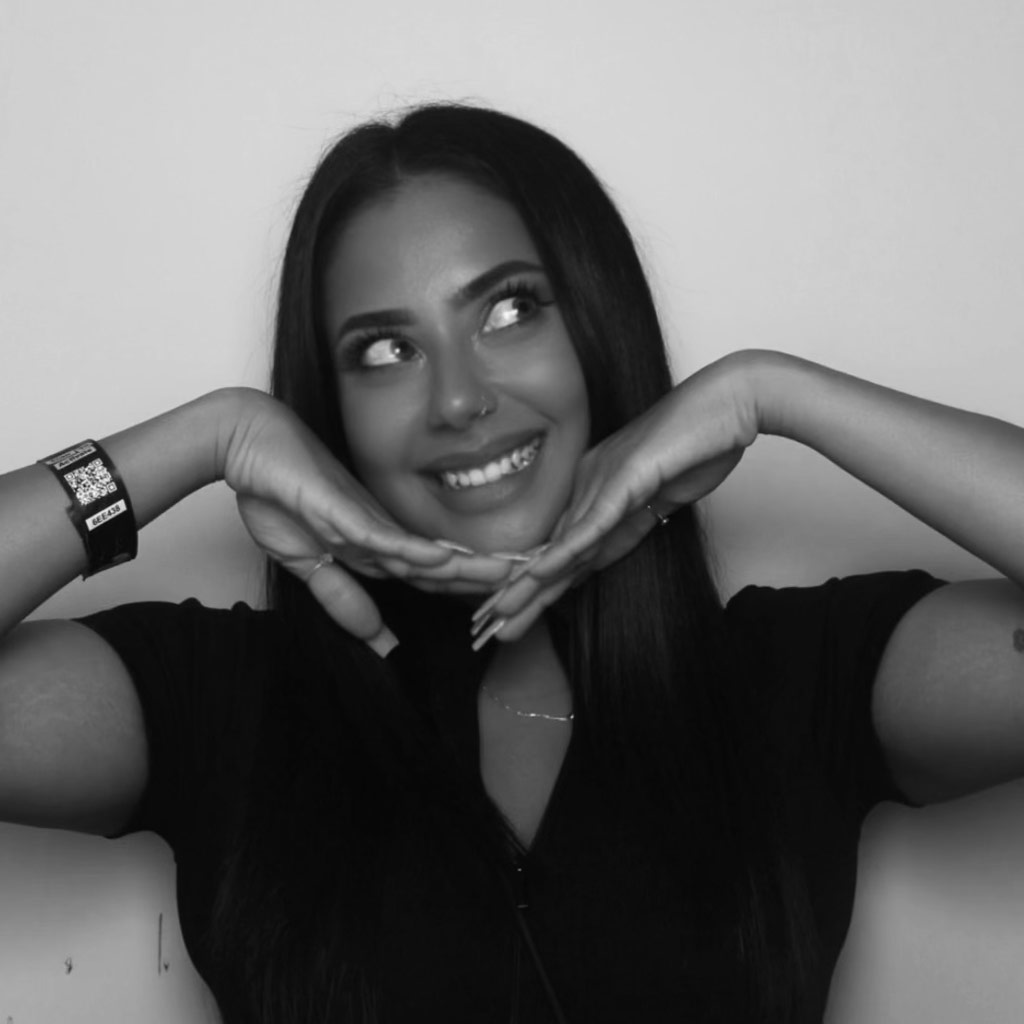
Shot By Nee
Nirah Sanghani is a music photographer who is known professionally as Shot By Nee. She shot her first live show in 2018 and has photographed many top artists, including Drake, Megan Thee Stallion, Meek Mill, Stormzy and Ed Sheeran. She is the official photographer for Burna Boy, shooting him on tour and behind the scenes. Her portfolio includes press photos as well as EP and album covers. Follow her on Instagram at @shotbynee
Shot By Nee’s favourite pictures
Burna Boy in Paris
‘These shots of Burna Boy in Paris Stadium are my favourite pictures I’ve ever taken for a personal reason. It’s the first time I took some images that were live and I actually believed in myself. I thought, “Wow! You did a really good job”. I’m quite critical of myself and when I’m putting work out I might just think, “Oh, just put it out” because that’s part of our job now – we have to share our work. But I was really excited to share these images. From being a little girl, who never thought about photography, I didn’t really know I’d do photography as an adult. Then taking those images of a huge artist and shooting in a stadium all by myself – I took those pictures and was like “Wow!” It’s not a technical thing. I just really connected to those images and felt proud of them. I’m Burna Boy’s photographer and I’ve worked with him for almost three years. I was on tour with him and that was THE first stadium show that I’d ever shot, so that was a big one.’
Fireboy, on set portrait
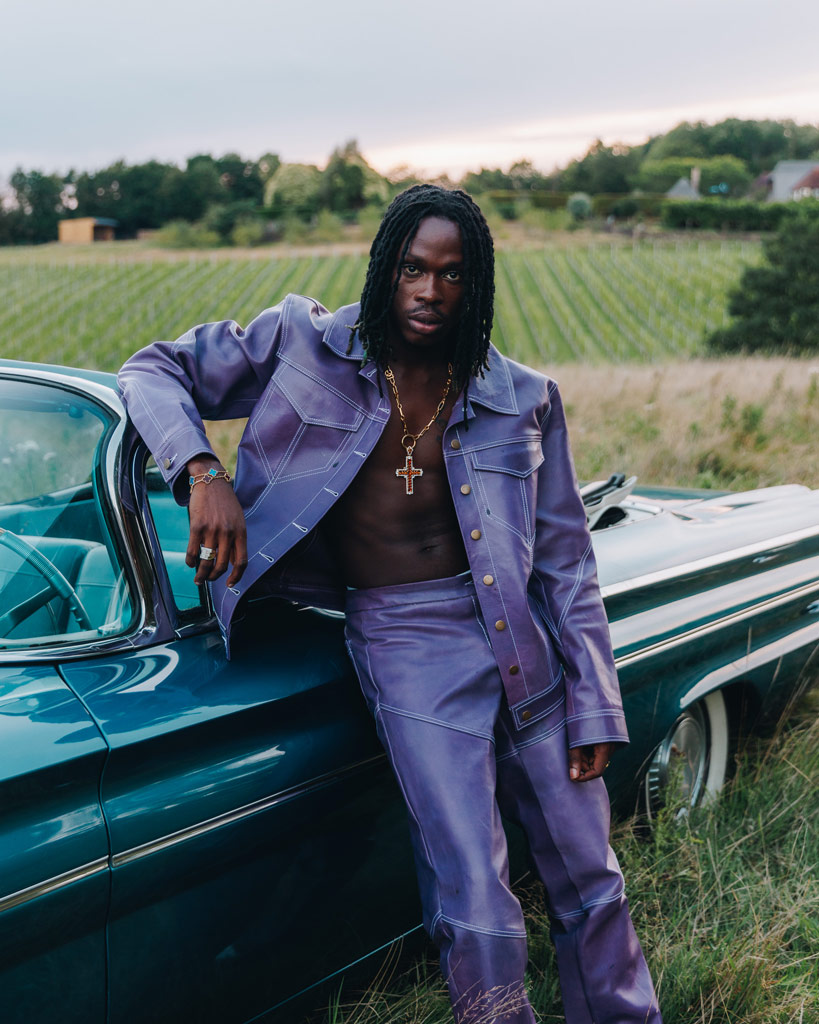
‘This was a portrait of Fireboy taken on set. I just really like this image and the grading I did. If you look closely he’s proper looking at me. I’m quite a shy person and, as a photographer, I find it quite hard to get portraits of artists where they’re engaging with me, rather than just being behind the scenes. I love the colours in this portrait and the way he’s got direct eye contact with the lens. There’s something old school about it. We were on set for a music video and another reason that I like it is because on set you don’t always get an opportunity to shoot stuff like that. I’d spoken to him before about it and said, “if you see me, just know that I will be shooting you”… and I got a quick second; he must have known I was there at that time.’
Raye on set
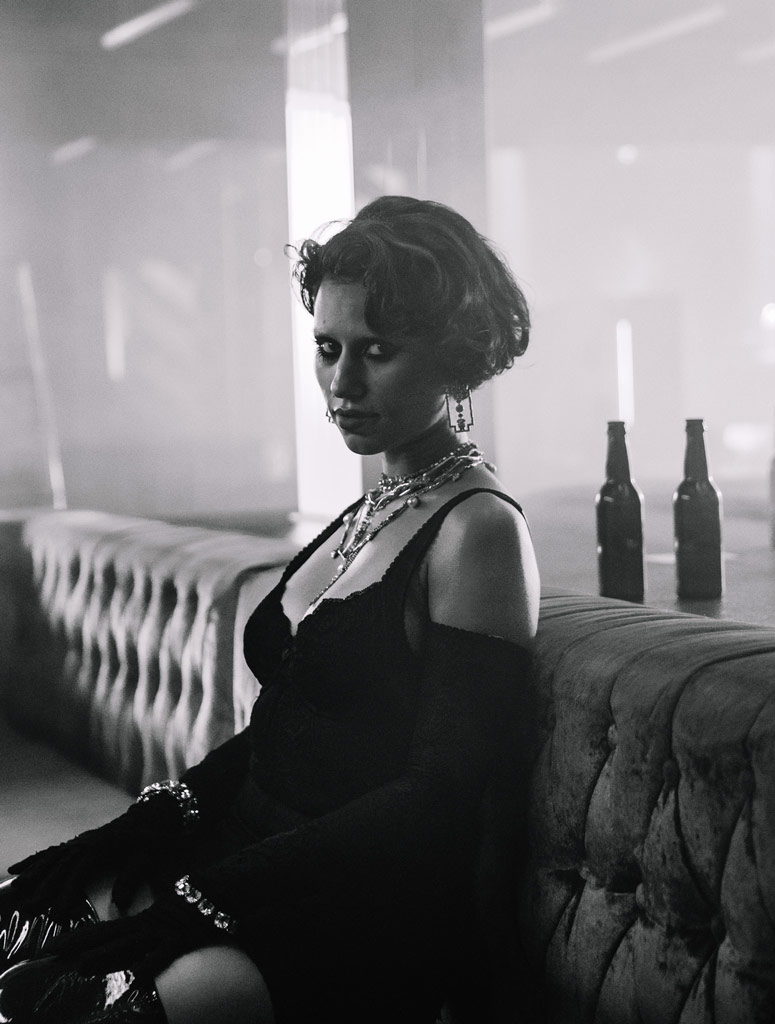
‘In this image of Raye I love the black and white, but I don’t always use it because I’m a big fan of colour. Again, this was taken on the set of a music video. There’s something about the way she’s looking into the camera that feels like she’s staring into your soul. She doesn’t like the comparison to Amy Winehouse, but in the music video the way she was dressed and stuff was giving the same vibe. This is a great image because it reminds me of the fact it was a great day as well. Raye is so lovely to work with; you don’t find a lot of artists who are as nice as her.’
Shot By Nee’s top tips for music photography
1 – Networking is a valuable skill
‘I’ve learnt that networking is your most valuable skill, alongside taking good photographs. You always hear “your network is your net worth”, and I strongly agree with that because I think I’ve got to the place that I’ve got to by networking. Having a good network would be my advice.’
2 – Be personable
‘Be personable whilst you’re around people. People still want to work with people that they like, and enjoy working with, over someone that’s incredibly talented and a bit arrogant or doesn’t really connect well with the team and the artist.’
3 – Practice at different events
‘‘Practice shooting every sort of live event. It doesn’t have to be music – I’ve shot theatre, operas, plays and fashion shows. All of that can help you to become a better photographer because it all involves people. Moving around onstage you get an idea for different lighting and you get an idea for different productions – all of that has helped me to grow my photography.’
4 – Shoot for free & build your portfolio
‘I still shoot a lot of free shows and a lot of stuff for my personal portfolio. Even though I mightn’t be getting paid, someone might see it on my Instagram, my page or my website and they might book me for a future shoot. Shoot stuff for your portfolio that you enjoy because maybe it’s a very different concert. Even if I’m not getting paid, I’m still getting to go to a show. I’m also gaining experience and building my portfolio at the same time.’
5 – Advice for entering competitions – trust your vision
‘I’ve never entered any competitions apart from the Abbey Road ones. You’re not losing anything by entering a competition. Your eye is essentially what makes you the artist that you are. So, trust your vision and put something in that you like; not what you think other people might like. There are so many judges, so you never know which judge might like your picture. It doesn’t have to be something that fits the world’s idea of a good picture. But enter, especially Abbey Road, because it’s free to enter and you’ve got nothing to lose. Sometimes an image speaks to you… when I look at peoples’ work on Instagram something might speak to me for a different reason that a different picture speaks to someone else. It might just invoke some emotion in you or some feeling and you can’t really tell what that is. If you get that from an image, then definitely enter into a competition. Why not?’
Tom Pallant
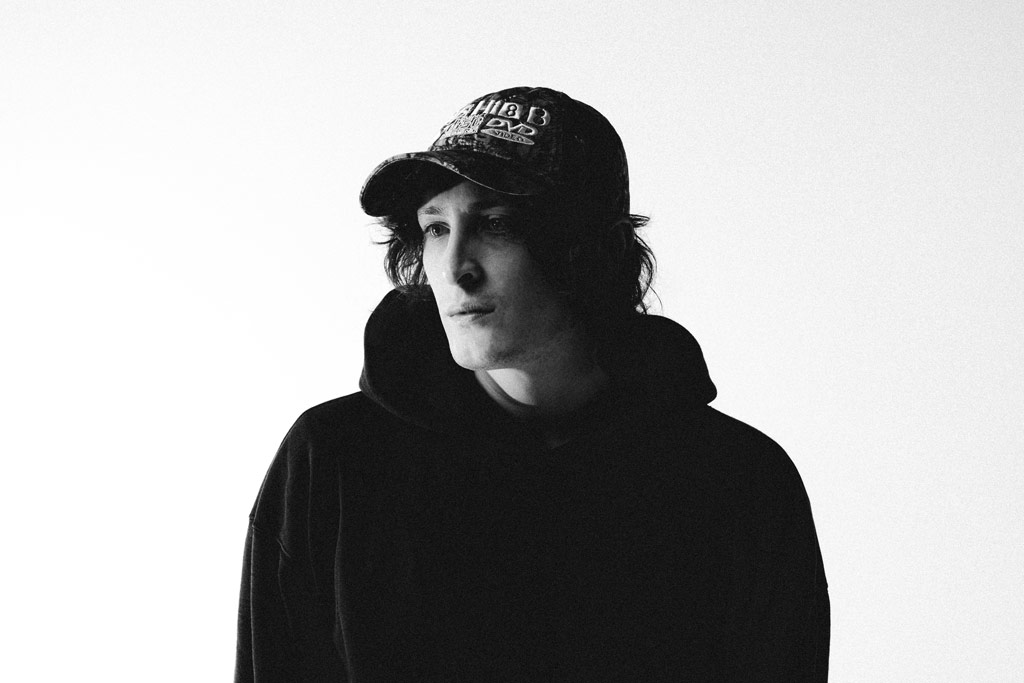
Tom Pallant is an English photographer, filmmaker and creative director. He is musician Yungblud’s creative director and photographer and is a two-time winner at the Abbey Road MPAs. Tom has also shot The Cure, Blur and Avril Lavigne. Follow him on Instagram at @tmpllnt or see more of his work at www.tmpllant.co.uk
Tom Pallant’s favourite pictures
Blur at Wembley, 2024
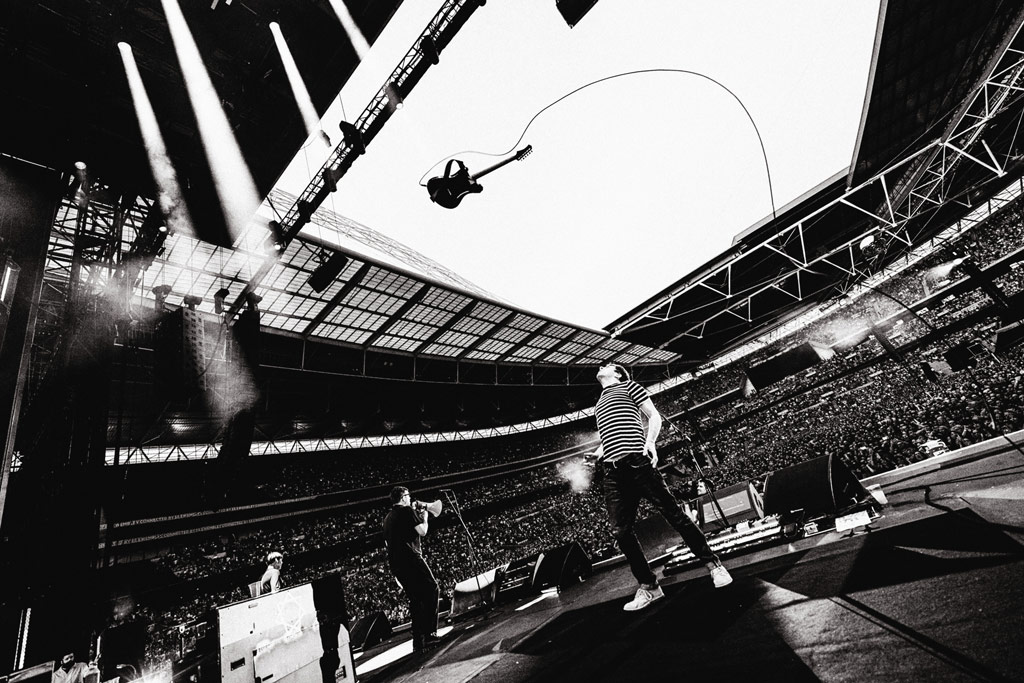
‘I think my first favourite one is the Blur one that won Music Moment of the Year last year [in the Abbey Road MPAs]. That’s a photo that I’ve dreamt about. There’s a photograph of Pearl Jam from 1992 (shot by Lance Mercer) and I think that is one of the most unbelievable photographs; just the scale of it, the shadow of Eddie Vedder as he’s hanging and the little figurines of basketball players on the drum riser. I saw that photo years ago and thought, “If I could take a photo a bit like that it would be absolutely insane”. I think it was kind of in my head a bit when I was trying to get that one of Graham [Coxon] throwing his guitar up. It’s probably the closest I could get to doing something a little bit like that Pearl Jam photo. I definitely get the same feeling from my image that that gave me when I saw it. Being able to shoot Blur at their reunion at Wembley Stadium is pretty insane and I was very lucky and fortunate to be able to come away with a photo like that.’
Yungblud crowd in Budapest, 2024
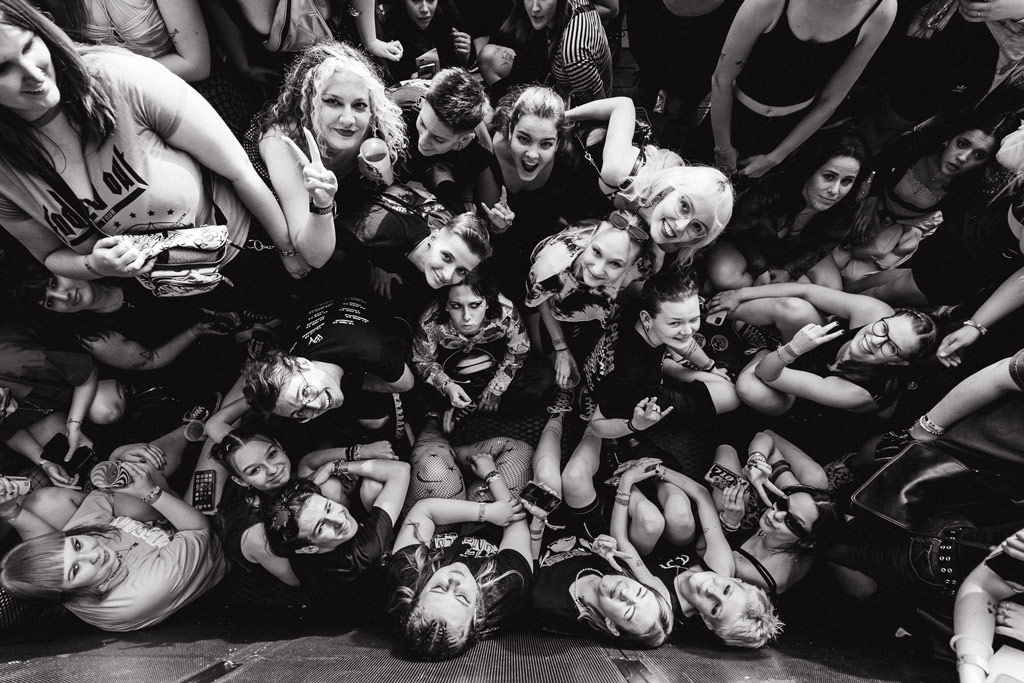
‘I do most of my work with an artist called Yungblud. I’ve toured with him for the past six years and have started doing album creatives and being his tour photographer. There are certain things that happen in photography where you’ll think a photo is amazing and some other people might not. That’s a beautiful thing because photography and art is so subjective. There’s a photo I took in Budapest last year of fans who were waiting at the front of a barrier in the baking heat and they’re all penned in. I just stuck my camera over the top of the barrier and told everyone to look up. It’s just an amalgamation of bodies, arms and legs. I shot it at a super wide angle, so there’s kind of distortion and everyone in the image is giving a slightly different vibe… people that haven’t noticed that the photo is being taken, some that have just started noticing. For me, each person in that tells a little bit of their own story and that’s something that’s really nice for me to be able to look back on.’
Tom Pallant’s top tips for music photography
1 – Give your live photographs feeling
‘It very much depends on what the event is; whether you’re shooting for an artist or whether you’re shooting for a festival or for PR. I come more from the world of shooting for an artist, as opposed to shooting for a festival. But, for me, being able to capture the energy and emotion of a live performance is really important. How you do that is up to your own discretion, but if you can kind of feel or hear the environment of a photograph I think that’s super helpful. If you can make even the tiniest club feel like and arena or a stadium, then that’s really valuable. What we’re trying to do is translate a live experience for people that aren’t there and whatever way you do that is super important.’
2 – Make yourself stand out
‘Getting your foot in the door is the most difficult thing because once you’re in there it kind of, hopefully, snowballs. There are a lot of people and a lot of photographers taking pictures. Technology has developed and a lot of people are shooting stuff on their phones and people are taking some amazing photos on point-and-shoots with a big zoom. It’s becoming more accessible but, with that, it does become a little more difficult for people to get their foot in the door as it becomes more saturated. Being able to stand out and do something a little bit different that no-one else has thought about, whether it’s a crazy crop, some sort of shutter effect or a mad edit… if you can do something that kind of stands out and shows your worth to someone that’s super valuable.’
3 – Develop portrait skills
‘With music photography there are a lot of barriers in place – PR and security… that kind of thing – so that can be really tough. But I think portraits are probably just one of the easier things to do, whether it’s someone you live with, friends, family or just random people in the street. It’s one of the most accessible ways to shoot anything… all you need to do is just ask someone. From that, you learn so many valuable things about lighting, positioning and how to work with a subject. It’s a transferable skill that you can take in to any aspect of it… whether it’s an artist’s portrait backstage or a press shoot. Everything that doesn’t seem like it might be that important at the time could be a transferable skill that actually sets you apart from someone else in trying to secure a job.’
4 – Give it a shot
‘The really beautiful thing about the Abbey Road MPAs is that it’s not gate-kept in terms of level or expertise or whether it’s professional or amateur or anything. It’s super open. Even if you don’t consider yourself a music photographer, you may have something amazing. I think that just by entering something that you feel is great, or at least good, someone else might see something amazing [in it]. Another thing to think about is there are so many different categories – there’s some new categories this year – that it might be kind of tough to say what the judges are looking for, but if you feel confident about something that you’ve shot, then just give it a shot.
5 – Entering awards leads to other opportunities
‘Also, so much comes out of being able to go to the Abbey Road MPAs event. There aren’t a whole lot of events like this, so being part of something like this can lead to a lot of other stuff. Since going to these events in the past couple of years I’ve worked with, been hired and been offered work by people that I’ve met at things like this. So, even if you’re nominated or shortlisted, it’s amazing and if you win something, even better. But, I think there’s so much value in everything else around it, not necessarily just the awards. These things are really worth doing.’
Enter the Abbey Road Music Photography Awards
The 2025 Abbey Road Music Photography Awards are open for entries till 28 July 2025. Entrants must be over 18 years of age and in each category you can enter between three and five images. To find out more, just go to abbeyroadmusicphotographyawards.com/competition

